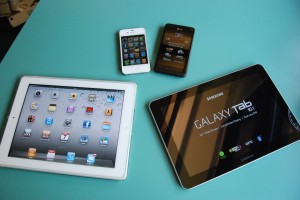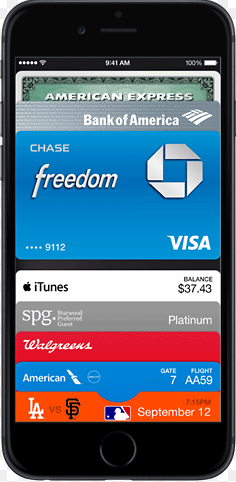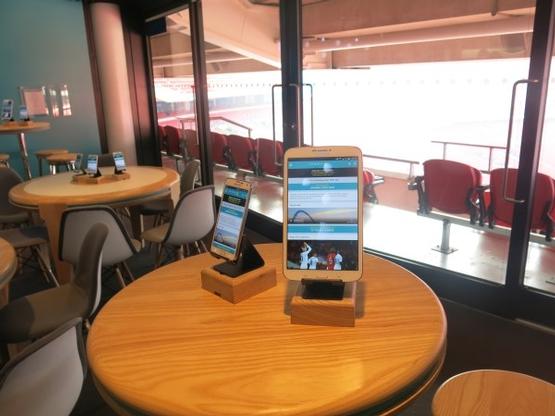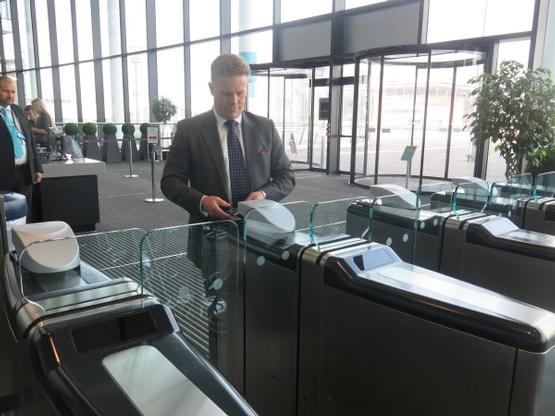All signs are pointing to mobile as the nascent-enough industry where online advertising market share can be taken from Google. Marissa Meyer of Yahoo has decided to take a stab at it. Google and Facebook have been battling for this space for a while now. Yahoo will release a self-service platform like Google and Facebook that will place companies’ ads across their mobile app network, Flurry. This includes both publishers and game apps.
Yahoo acquired Flurry last July for $200 million dollars and has mostly been focusing on developing a base of app developers but will reportedly be combined with Yahoo’s advertisement platform Gemini in the coming months. Previously, Gemini’s ad network consisted of only the properties Yahoo owned.
Google’s and Facebook’s mobile ad buying platforms are formidable foes. The Facebook Audience Network allows advertisers to personalize their messaging to each person because of their trove of personal information and affinity data. And Google’s mobile ad platform, AdMob, has an extensive network after years of working with publishers using AdSense. It is projected that in 2015 Google will have 35% mobile ad share and Facebook will have around 17%.
Yahoo has come under fire recently for not keeping up with the times. Their controversial purchase of Tumblr might prove useful in endearing them to a new generation and this move seems like a bold yet necessary move into the growing mobile space. Yahoo has been making inroads into the mobile space with ad revenue from mobile accounting for 17% of its revenue in last quarter.
This all comes at a time where Twitter’s growth has slowed, and many believe that even before this move they would surpass them in market share this year. However, even this feat would not put them close to even Facebook’s projected 17% market share.
Another recent acquisition points to a move into video advertising. With online video growing one can expect to see all of these coming together in the near future. Yahoo will have a formidable stack of offerings for publishers and app developers.

 Apple Pay is the new service provided by the tech titan, which allows consumers to use either a card attached to their iTunes account or upload a new credit card number. From there, the consumer merely needs to hold their iPhone 6 or iPhone 6 Plus up to a unique scanner at the check-out line, deploying their fingerprint as confirmation of the transaction; the program is also available on the recently announced iPad Air 2 and iPad Mini 3. The transaction will be complete within moments; no credit, debit or cash necessary. Each transaction creates a unique sixteen-digit security code. If this number is interrupted, the fact that it is a one-time only code prohibits the purchase, card or device from being hacked; no other device or person can use the code again, as a means of hacking valuable information.
Apple Pay is the new service provided by the tech titan, which allows consumers to use either a card attached to their iTunes account or upload a new credit card number. From there, the consumer merely needs to hold their iPhone 6 or iPhone 6 Plus up to a unique scanner at the check-out line, deploying their fingerprint as confirmation of the transaction; the program is also available on the recently announced iPad Air 2 and iPad Mini 3. The transaction will be complete within moments; no credit, debit or cash necessary. Each transaction creates a unique sixteen-digit security code. If this number is interrupted, the fact that it is a one-time only code prohibits the purchase, card or device from being hacked; no other device or person can use the code again, as a means of hacking valuable information.

 Augmented Reality apps strive to provide a virtual map of the consumer’s surroundings. Layar and several other startups have attempted to make realistic virtual maps in the past, but have often struggled due to the fact that they rely solely on sensor data, which can result in an imperfect match between the virtual depiction and the real environment at hand. However, according to an article recently completed by Tech Crunch, two new patent apps have been released by Apple, which will work to compensate for the imperfection of relying completely on sensor data.
Augmented Reality apps strive to provide a virtual map of the consumer’s surroundings. Layar and several other startups have attempted to make realistic virtual maps in the past, but have often struggled due to the fact that they rely solely on sensor data, which can result in an imperfect match between the virtual depiction and the real environment at hand. However, according to an article recently completed by Tech Crunch, two new patent apps have been released by Apple, which will work to compensate for the imperfection of relying completely on sensor data.